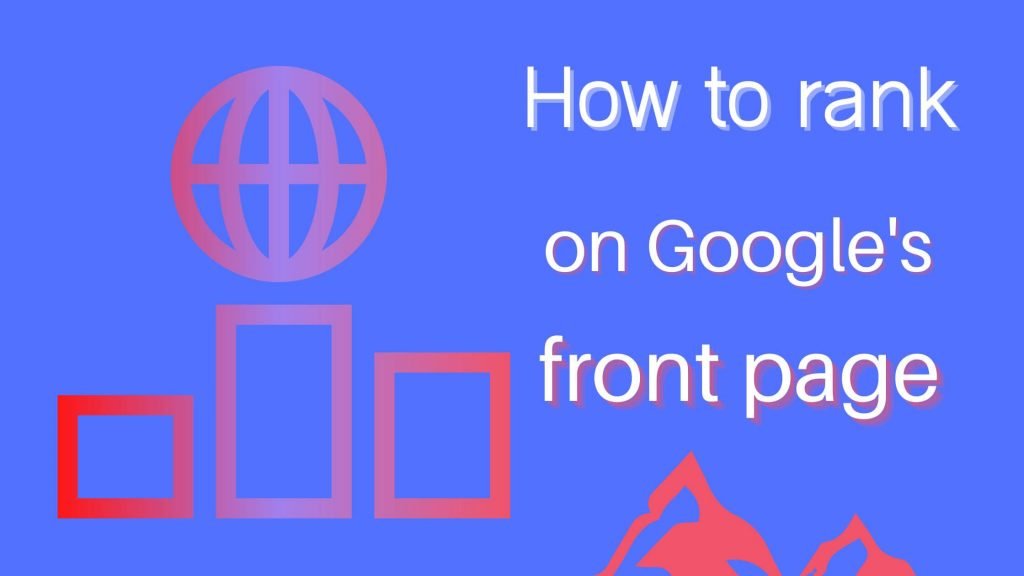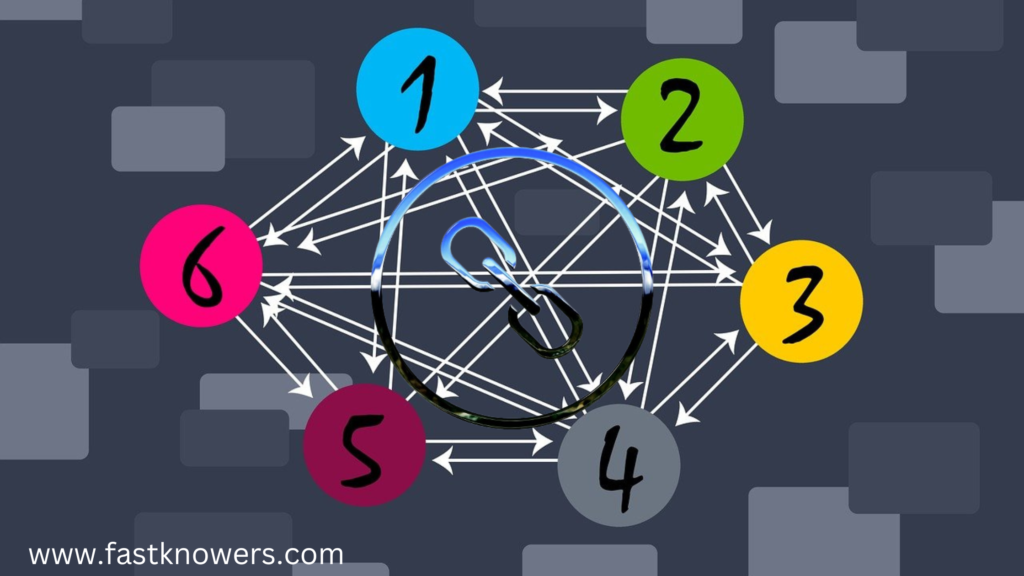
The Google front page is one of the most important pages on the internet. If your blog doesn’t rank well on it, then all of your other efforts will be for nothing. Today, I shall show you top tips on how to rank a blog on Google’s front page.
How do you get ranked on Google’s front page? Or what does it take to rank higher than your competitors? In this article, we’ll explain everything from keyword research and title tags to image optimization and social sharing strategies!
Let’s begin by letting you know the meaning of Google’s front page and the steps of how to get it. You may see our expert step-by-step guide on how to add a Nofollow tag to an external link.
What is Google’s front page?
Google’s front page is the first page of search results, and it can be accessed by typing “a query” into your browser. The results will be displayed in a carousel format with links to other pages that match your query. For example, if you search “How do I make money online,” then you’ll see different search result pages.
How to rank your blog on Google’s front page
Do you want to rank your blog on Google’s #1 front page? If this is what you’re thinking, then keep these hints in mind.
First, identify what it is that you want to rank for. This could be the keyword that you want people to find your blog with.
Research keywords that relate to your niche as much as possible and use them naturally throughout each blog post title and article body text (don’t just mention them once at the beginning).
Carrying out keyword research before you post an article helps increase your traffic from search engines like Google to your blog.
Read these also:
- Top best security plugins for bloggers.
- Tips on how to improve your writing skill as a blogger.
- Differences between a blog and a website (vivid explanation).
Now, let’s start listing and explaining step-by-step guides and tips on how you can rank your blog (new/old) on Google’s front page.
Step 1: Identity what you want to rank for
The first step is to identify what you want to rank for. For example, if you’re selling a product or service, then you’ll want to make sure that your listing is relevant to the topic of the search query.
When identifying this goal, note that each query has its own unique set of keywords associated with it.
E.g, if someone searches “Plumber New York City” but only mentions their city name once and doesn’t specify anything else, then there’s no way for Googlebot to know whether or not those searchers are looking specifically at plumbers in NYC or whether they just meant people who work as plumbers in general.
However, by doing some keyword research as we will briefly describe below, you will know what kind of services/products/etc., you can ensure your listings get noticed by searchers searching specifically on those terms.
Step 2: Run keyword research
Now that you have identified an idea of what you want to rank for, it’s time to start researching keywords.
You can use online tools built by SEO expert companies to run keyword research. Some of them are Google Keyword Planner, Ahref, SEMrush, Ubbersuggest, etc.
You can use it to find related keywords by entering specific phrases into the search bar and clicking on “Get Ideas.”
These results will show up in a list below the search box. Then click on any one of them to see more information about it (such as its estimated monthly searches).
The important part of Google Keyword Planner is you can enter multiple terms into its box at once if necessary and they’d be grouped together under one heading when they’re displayed in order later on within another section of this webpage (this makes finding similar topics easy!).
Step 3: Learn to understand the search intent
As a blogger/content creator, it is always ideal to learn to understand how search intent works. This understanding helps you figure out how to help Google understand your blog.
Your #1 priority should be making sure that the searchers are getting exactly what they’re looking for.
If they search a query, for example: “how do I get rich?” and there are blogs that wrote an article about “How do I make money online?” or “How do I make enough money?” then Google will rank these blogs higher than yours because they seem to have an answer to the question.
Step 4: Make your blog post titles include your keyword
One tip to help increase your Google’s front page is to always make your blog post title include your keyword. Here is the tip; use your keyword at the beginning, middle, and end of your blog post title.
And also make sure to use it in every sentence. It is also recommended for the first 100 words of your blog post be about that keyword.
Step 5: Include the post headings with your Keyword
If you want to rank on Google’s #1 front page, you must make sure that your main headings are contained with your keyword. This can be done in several ways using a heading tag.
Heading tag are H1, H2, H3, H4 down to H6. You may read our article which we discussed how to properly add a heading tag to your blog post.
Step 6: Include the keywords in your text
In order to naturally rank your blog on Google’s front page, you need to use keywords across your blog content such as its title, main headings, and first paragraph.
You can use the keyword phrase of what you want to rank for throughout your article so that Google will recognize it as a relevant keyword phrase when ranking your content higher than others.
Step 8: Optimize your images for SEO
The next step in ranking your blog on Google’s front page is optimizing your images for search engine rankings. You may see our guide on top best plugins for optimizing images on your blog.
The first step is to make your image file name descriptive. This helps Google know what it’s looking at and will help them identify which posts have an image attached to them when searching for that keyword or phrase.
Second, use alt text on every single image on your blog so that a searcher who wants more information about something that relates to your post easily view the image and get more details about it.
Optimizing your images for SEO using alt text tags also helps allow your blog users who don’t have sight to know the information that your images are all about.
Step 9: Write a nice converting meta description
Next, you’ll want to write a Meta Description that converts. The meta description is the first thing people see when they search for your blog or website.
It is what Google uses to determine whether or not your site should be included in its search results. You may see our guide on how to create metadata for your content (blog & website).
A good meta description will entice readers into clicking through and learning more about what’s on site. Make sure that it’s relevant, and concise and answers any questions users may have about what you offer.
Step 10: Publish and promote your post at the right time
Now that you have a blog post, it’s time to promote it. You can use social media, email newsletters, and more to get the word out about your new blog post.
You can create a free newsletter tool using Mailchimp, Google Feedburner, etc, and be able to be sharing your new or old articles with your readers. You may see our step-by-step guide on top HTML codes every new blogger needs to know.
While promoting your articles, use Google Analytics and the Search Console tool to track how many people are reading each of your posts, their source, and the keywords they’re searching.
Conclusion
By following these tips (steps), you will rank your blog on Google’s front page. Content is king. To make your blog and website rank on Google and other search engines, write a high-quality blog post that is relevant to the keyword or query you want your blog to rank for.
As you are writing articles, make adding internal links a habit. You may see our guide on how to write your first blog post on WordPress.
We hope this article has helped you know the tips on how to rank your blog on Google’s front page. If you have any questions or suggestions, please leave them in the comments section below. For more updates, subscribe to my YouTube channel.







Great article. I am being helped by this guide.
Hi Takayuki
thank you for your feedback
Great step-by-step article. I am helped by this guide.
Hi Anonymous thank you for your feedback
Thank you for this insightful article on how to rank a website on search engine results. Please can you talk about how to do keyboard research?